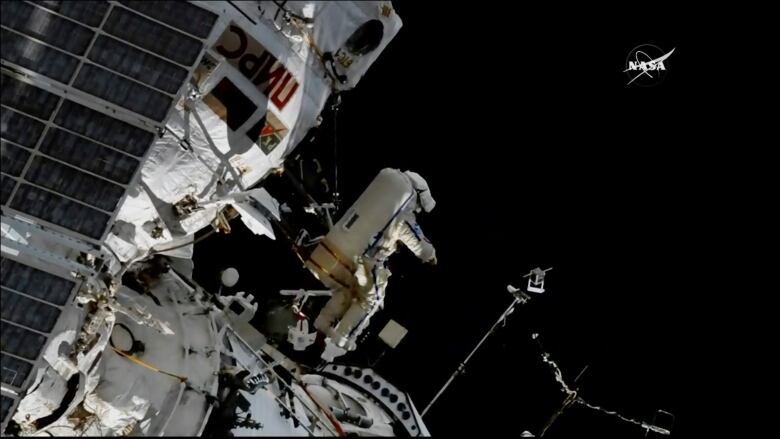Space station is taking up birdwatching with a newly installed antenna
Cosmonauts installed the bird-tracking GPS antenna and launched 4 satellites during spacewalk

Russian cosmonauts took a spacewalk Wednesday to fling tiny satellites into orbit and install an antenna on theInternational Space Station for tracking birds on Earth.
Soon after leaving the space station, Sergey Prokopyev released all four research satellites by hand.
"I'm ready for the launch," Prokopyev told Russian flight controllers near Moscow.
The first satellite tumbled away as the space station soared 400 kilometres above Illinois. By the time the fourth one was on its way 14 minutes later, the station was almost to Spain. Two of the satellites were the size of a tissue box, while the other two were longer.
Prokopyev and Oleg Artemyev then turned their attention to a German-led, animal-tracking project known as Icarus, short for International Co-operation for Animal Research Using Space.
Russian spacewalker Sergey Prokopyev hand-deployed the first of two Sirius nano-satellites into Earth orbit 12:51pm ET today. #AskNASA https://t.co/yuOTrZ4Jut pic.twitter.com/zQEhUKfv3e
—@Space_StationThe space station is an ideal perch for the antenna, compared with a satellite, said project director Martin Wikelski of the Max Planck Institute for Ornithology in Germany. That's because spacewalkers could fix something if necessary and the computer is better protected from space radiation, he noted.
The project will start out tracking blackbirds and turtle doves with small GPS tags, then move on to other songbirds, fruit bats and bigger wildlife.
Wikelski said researchers have ear tags for big mammals like gazelle, jaguars, camels and elephants, as well as leg-band tags for larger birds such as storks. The tags are easy to wear and should not bother the animals, he noted.
Wikelski, who watched the spacewalk from Russian mission control outside Moscow, said researchers can better understand animal behaviour through lifelong monitoring. Among the things to learn: where the animals migrate, and how they grow up and manage to survive.
"We also learn where, when and why they die," he said in an email, "so we can protect our wild pets."
The space station is also home to three Americans and one German. They have two spacewalks next month.












_(720p).jpg)


 OFFICIAL HD MUSIC VIDEO.jpg)
.jpg)



























































































